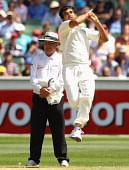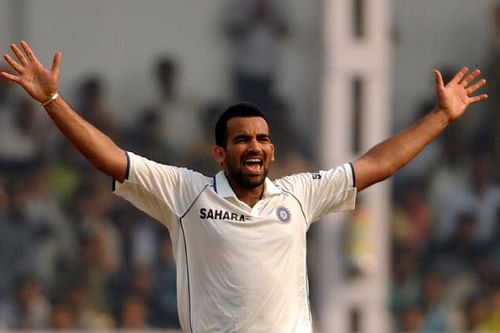
More than just a comeback for Zaheer Khan?

Zaheer Khan
At 35, Zaheer Khan isn’t one of the inexperienced Indian youngsters taking the flight to South Africa in a bid to overpower the best at their own den. With the World Cup only two years away, no team in the world would prefer to invest in a fast bowler in his mid-thirties who hasn’t had enough international exposure in the last twelve months. This is what makes the selection of Zaheer Khan an interesting analysis.
Having been out of favor since December 2012 when he disappointed with figures of 1 for 94 from 31 overs in the third Test against England at Kolkata, Zaheer underwent a grueling six-week physical training stint in France in a bid to regain his place in the Indian scheme of things.
India’s fourth highest wicket-taker is only 5 wickets away from registering 300 wickets to his name, and with his current form in the domestic circuit where he took 5/88 in his last match against Delhi, he is expected to write his name in the record books on this tour itself.
But there’s certainly more to this veteran than is apparent. While his abilities as a premium left-arm seamer is beyond doubt, the added advantage of having an experienced mentor for grooming raw talent in alien conditions is a prospect that appears delicious on a long-term aspect.
Over the last five years or so, Zaheer has done an excellent job in nurturing a relatively inexperienced Indian bowling line-up. While serving the country on a regular basis with his brilliance on the field, the seasoned campaigner has simultaneously ensured that emerging pacers like Ishant Sharma and Umesh Yadav soaked in useful knowledge from his experience.
Spearheading the Indian attack, Zaheer has proved to be a responsible leader who has seldom hesitated to run in from mid-on or mid-off and lend a helping hand to his men when they were having a tough time inside the 22 yards. Unlike some of his predecessors, Zaheer has earned unanimous admiration for his role as a mentor and a pillar of support.
It is not as much a coincidence to watch Ishant Sharma performing better when Zaheer is around. The left-arm seamer has been frequently eulogized by his teammates for the psychological support he provides. Ishant, who has played a major fraction of his 50 odd Tests under Zaheer, has been equally vocal about the latter’s involvement in fostering youngsters.
Thus Zaheer’s selection for the tour in the Rainbow Nation far transcends the mere necessities of a left-arm pacer who can swing the ball in both directions.
While it is no less a fact that Zaheer adds more variety to the likes of Bhuvaneshwar Kumar and Mohammed Shami, it is as much important to recall that it was he who turned the odds in favor of India in 2006 and 2010 when he made arrangements for Graeme Smith’s nightmares.
India will be only too eager to wrench out the benefits of his vast experience when they touchdown on the fast tracks against the likes of Hashim Amla and AB de Villiers. Notwithstanding Bhuvneshwar Kumar’s exploits and Mohammed Shami’s impressive run, the sheer inexperience factor on the green tracks of Centurion and Durban leaves the Indian bowling line-up with a vulnerable image.
This is primarily where a qualified stalwart like Zaheer becomes the ultimate requisite. With 295 wickets in 88 Test matches, he is evidently a man who has seen enough. His immense international exposure and more than impressive CV makes him stand out in the otherwise lackluster Indian attack.
However, it is his responsibilities as a guide that will go under the scanner more than his own bowling as the Indian team gears up to face litmus test against the finest exponents of the trade.
The mantle of the senior fast-bowler has to be passed on to safer hands at some point of time. Although Ishant Sharma remains the most experienced of the current crop, he has already showcased enough reasons to be ruled out as an existing option. In this context, this series will also expose another cricketer who will be competent enough to carry on the legacy of Zaheer Khan.
The impact of Zaheer’s presence is certainly going to benefit the Indian team thereby making it all the more critical to assess the performance of all the pacers as a unit, rather than as individuals. In more occasions than one, Zaheer has proved to be a major factor in matches in South Africa both physically and psychologically. He has mastered the role of a mentor and it now depends on his students to reciprocate his faith in them.
As for Zaheer, he remains the least alien to the pressure of a comeback burdened all the more by his flattering form in domestic cricket. He has done it in the past. It remains to be seen whether he can do it again.